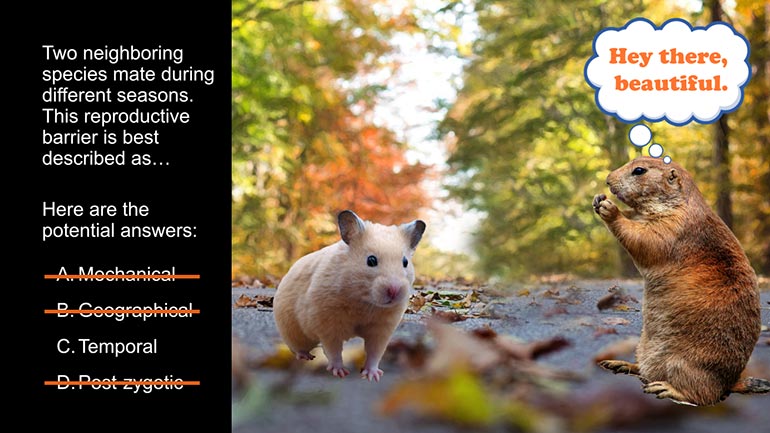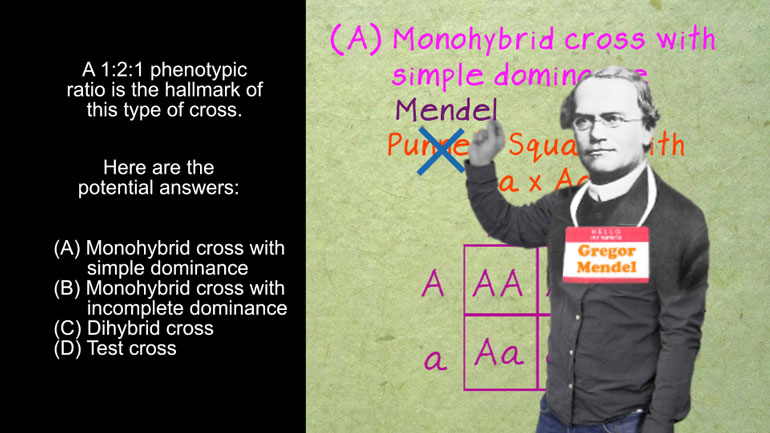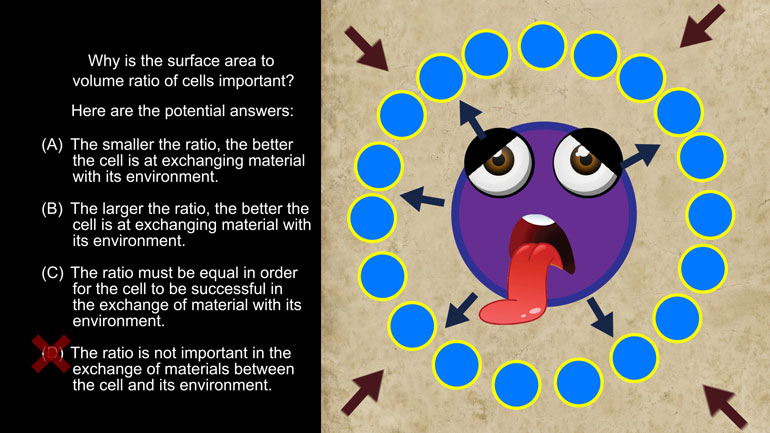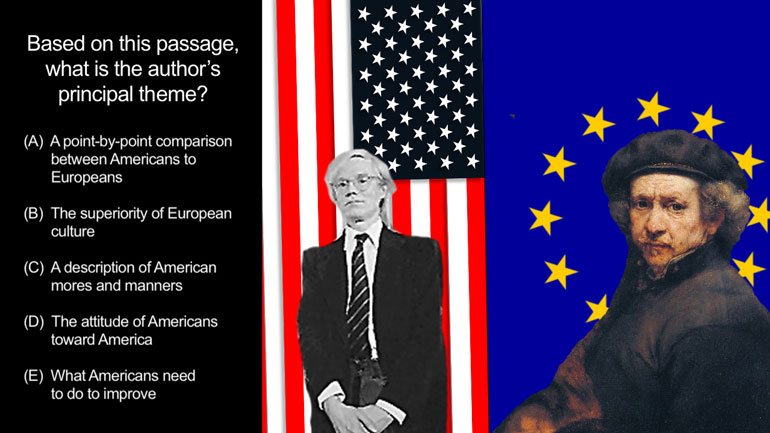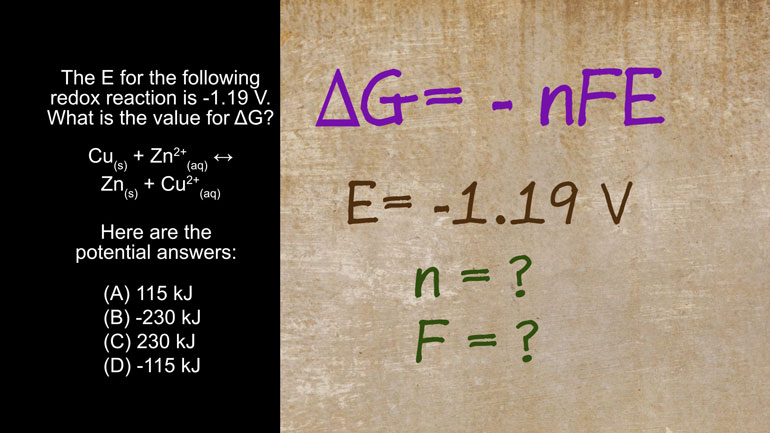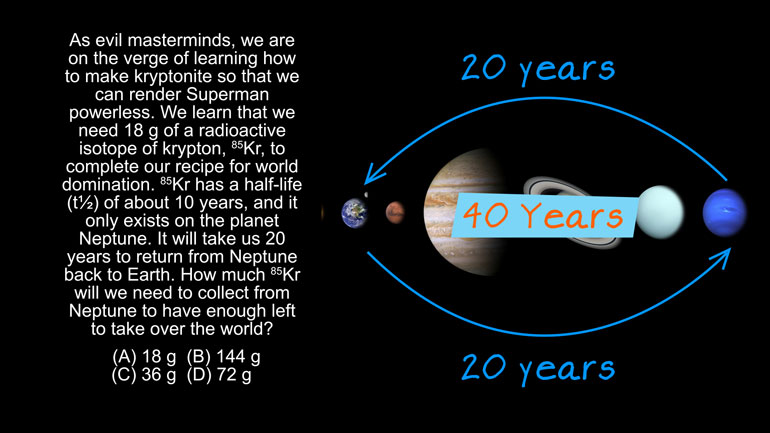ShmoopTube
Where Monty Python meets your 10th grade teacher.
Search Thousands of Shmoop Videos
AP Videos 1345 videos
AP Biology: Biological System Interactions Drill 1, Problem 1. Complete the sentence about a saturated fatty acid.
AP Biology: Essential Life Process Information Drill 1, Problem 1. If one parent is heterozygous for the sickle cell trait while the other par...
AP Biology: Evolution Drives the Diversity and Unity of Life Drill 1, Problem 1. The first cells on planet Earth were likely what?
AP Chemistry 1.5 Rearrangements and Reorganization of Atoms 6 Views
Share It!
Description:
AP Chemistry 1.5 Rearrangements and Reorganization of Atoms. What is the total volume of gas formed at STP from the decomposition of 1.0 mole od ammonium nitrate, NH 4 NO 3 , with the help of a catalyst?
Transcript
- 00:03
Here’s your Shmoop du jour, brought to you by decomposition, like when you burn your [Banana going rotten]
- 00:09
lab notes at the end of the year. [Kid burning his notebook]
- 00:12
Here’s today’s question:
- 00:14
What is the total volume of gas formed at STP from the decomposition of 1.0 mole of
- 00:19
ammonium nitrate, NH4NO3, with the help of a catalyst?
Full Transcript
- 00:24
The reaction is as shown on the screen. [The formula appears]
- 00:28
And here are your potential answers: Wait?
- 00:31
Catalyst?
- 00:32
Where’s the catalyst? [Cat holding a piece of paper that says list]
- 00:34
Why would they mention a catalyst and not give us any information about the catalyst? [Scientist picking up different coloured liquids looking confused]
- 00:38
Or, well, it’s a trick question.
- 00:41
The catalyst, or lack thereof, doesn’t affect the answer at all people. [Catalyst looking unhappy]
- 00:44
A catalyst just speeds up a reaction by lowering the activation energy.
- 00:49
It doesn’t change the extent of the reaction.
- 00:52
That uncool distraction aside, what the question is really asking is how much gas stuff is [Gas coming out of a flask]
- 00:57
formed in the reaction. [The flask looks embarrassed]
- 00:59
Anytime you’re asked how much stuff there is, your immediate thought should be “what
- 01:02
is that in moles?” [A mole lying on a scale]
- 01:04
And then your next thought should be, “when’s lunch?” [Guy holds his rumbling stomach]
- 01:07
So how many moles of gas are formed in the reaction?
- 01:10
We know from the equation that for every 2 moles of ammonium nitrate we put in, we get
- 01:14
2 moles of nitrogen gas and 1 mole of oxygen gas out. [The products are highlighted]
- 01:18
We don’t care about the water because it’s a liquid, and the question is all about gas. [Water looks sad and the gas looks happy]
- 01:22
So since we’re only putting 1 mole of ammonium nitrate in, we’ll get half of what we would
- 01:27
from 2 moles, which means 1 mole of nitrogen gas and 0.5 moles oxygen gas for a total of
- 01:34
1.5 moles of gas.
- 01:37
But put on the brakes, we’re not done yet. [Car brakes quickly]
- 01:38
The question asked for volume.
- 01:40
So how are we going to figure out volume if we can’t just pick up the remote and change [Woman shaking a flask at the TV]
- 01:44
it?
- 01:45
Well, the question specified that the conditions are “STP.”
- 01:48
Unfortunately, that doesn’t stand for “super tiny puppy.” [A puppy small enough to fit in the palm of a hand]
- 01:52
STP is Standard Temperature and Pressure.
- 01:55
You should know going into your test that one mole of gas occupies 22.4 liters at STP.
- 02:01
So we multiply 22.4 by the 1.5 moles of gas we have to get 33.6 Liters of gas.
- 02:08
Which is actually 34 because of the whole weird science magic of significant figures. [Guy holding a book of significant figures and smiling]
- 02:12
We don’t even have time to get into that right now.
- 02:14
So that means that D is the correct answer.
- 02:17
Now where was that remote? [Woman finds the TV remote]
- 02:19
We heard the super tiny puppy bowl was on. [Tiny puppies playing football]
Related Videos
AP Chemistry 1.3 Chemical Reaction Rates. What is the overall order of the reaction?
AP Chemistry 1.4 Chemical Reaction Rates. What are the correct units for a second order rate constant?
AP Chemistry 1.5 Chemical Reaction Rates. What is the rate law for the reaction?
AP Chemistry 3.2 Laws of Thermodynamics. What is the value for ΔG?










